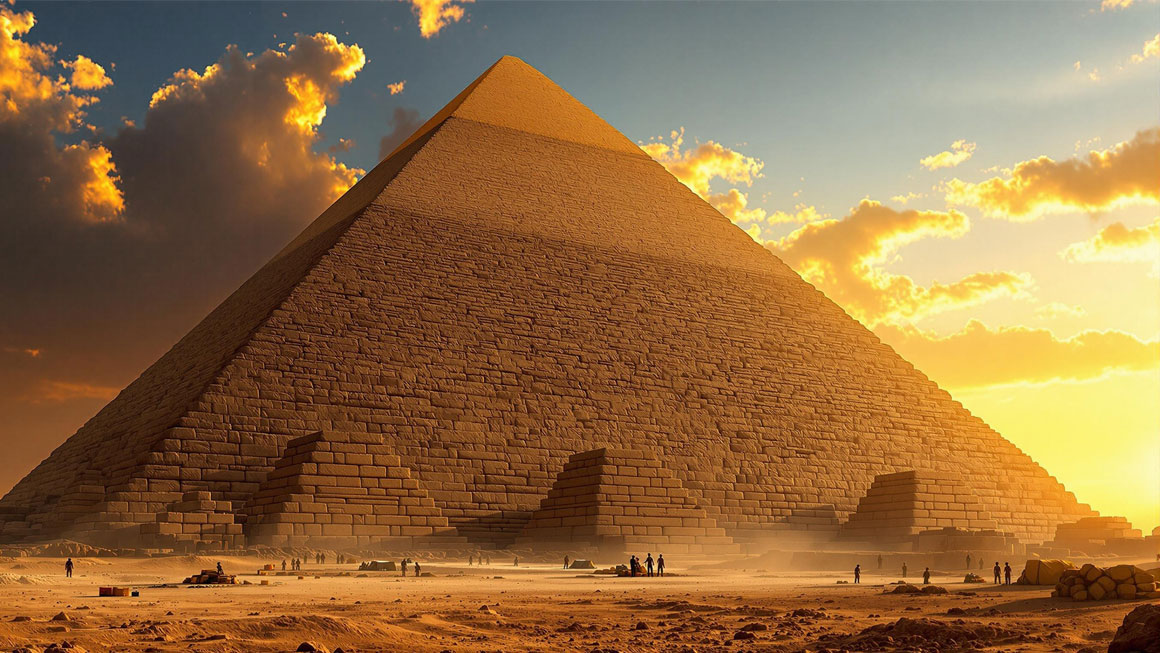If you’ve ever stood under the blazing sun of Giza and felt the warm dust cling to your skin, you know—there’s something different in the air there. Not just the heat or the noise of tourists or even the occasional camel trying to sneak into your selfie. It’s deeper. Heavier. Like the sand is whispering old stories. And at the center of it all, like ancient kings frozen in time, are the pyramids.
I remember seeing them for the first time—not in person, but in an old encyclopedia in my school library. The picture was faded, but it didn’t matter. I stared at those huge triangles and imagined what kind of people could have made something like that thousands of years ago. Spoiler: I still don’t fully know. Nobody really does. But that’s kind of the point.
Built by Men, Not Aliens (Probably)
Let’s get one thing out of the way. No, aliens didn’t build the pyramids. At least, there’s no real evidence they did. I know the stones are huge. I know the alignment is almost perfect. And yes, I’ve heard all the theories about how the stars match with Orion’s Belt. But if you look at the actual tools and techniques used—like copper chisels, sledges, and lots (and I mean lots) of manpower—it’s actually more amazing that humans did this without modern tech.
Some archaeologists believe the workers weren’t slaves, as many movies suggest, but skilled laborers who lived in nearby camps. They were likely proud of their work. There’s even graffiti inside some of the pyramids left by these workers, joking and naming their teams like “The Friends of Khufu.” It makes it all feel… strangely familiar. Like a construction site today, just with more sand and fewer machines.
More Than Just Tombs
The common idea is that pyramids were tombs for pharaohs—and yes, that’s mostly true. But calling them just tombs feels like calling the Eiffel Tower a big radio antenna. The Great Pyramid of Giza (the one built for Pharaoh Khufu) isn’t just big. It was the tallest man-made structure in the world for over 3,800 years. Think about that. Before skyscrapers, before steel, before even Rome was Rome, there was that
Some researchers believe the pyramid’s internal layout wasn’t only for burial. The chambers, air shafts, and precise geometry suggest deeper symbolism—maybe related to the sun, rebirth, or even the journey to the afterlife. Ancient Egyptians saw death not as an end, but as a transition. So the design had to reflect that belief. I mean, if your whole existence is about preparing for eternity, your final address better be something special, right?
Closer Than You Think
What’s funny is that even though they were built over 4,500 years ago, the pyramids still show up in today’s culture. From music videos to video games, they’re everywhere. Even in fashion and design—those clean lines, that symmetry—it’s like the pyramid shape keeps whispering to artists across time.
I met a taxi driver once in Cairo who told me he’d lived his whole life just a few kilometers from the pyramids. “Sometimes,” he said, “I forget they’re even there. But when I look up at them, especially during sunset… I feel small. But also lucky.”
I liked that.

Leave a Reply